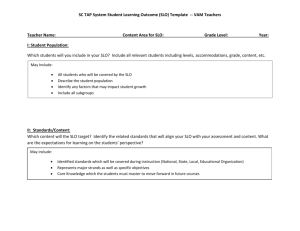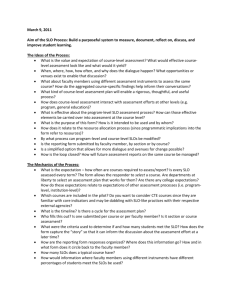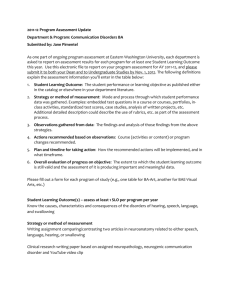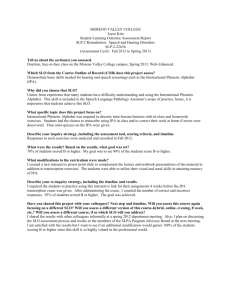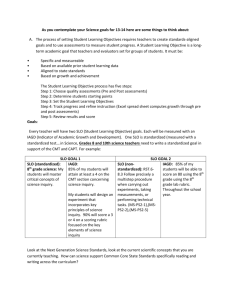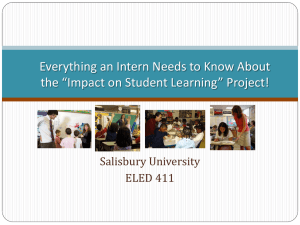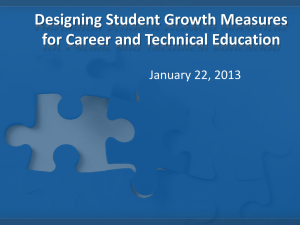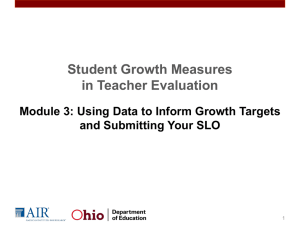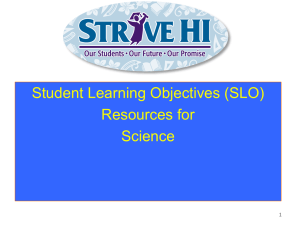SLOs-What You Need to Know
advertisement
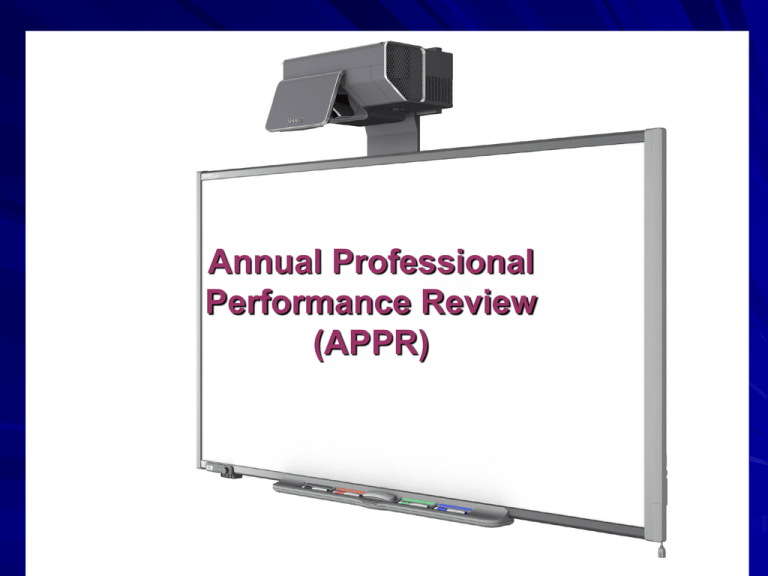
Annual Professional Performance Review (APPR) What are the components of APPR? Teacher Evaluation –60 points (observation*/goal setting) –20 points (State Growth Measure/Student Learning Objective [SLO] or goal setting process) –20 points (local assessment) *Observations based on New York State Teaching Standards and rubric selected by district. What is a Student Learning Objective? • A Student Learning Objective (SLO) is an academic goal for students that is set at the start of a course and tailored for that specific course. • It represents the most important learning for the year. • It must be specific and measurable. • It must be based upon data and aligned with State/National/Common Core Standards. • Teacher scores are based upon the degree to which these goals are attained. Student Learning Objectives (SLO) Will provide the Comparable Growth Measure (CGM) for any teacher who will not receive a growth measure from the state. Is worth 20% of teachers overall evaluation. Can also be used for local assessments. Should be comparable for all teachers teaching the same course. Based on prior student learning data. Who Will Need an SLO? For those classes that do not have a state assessment and are not “associated with a state assessment or a Regents,” develop/identify a district-wide assessment and set an SLO for that assessment. Ex. HS Calculus, MS Band, World Languages. In many cases one SLO will be sufficient. However, it may be necessary to have more than one SLO. The SLO must address 50 % of a teachers total enrollment. For example, if a teacher has 150 students (50 students in French 1, 50 students in French 2, 50 students in French 3), she will 2 SLOs. What Comprises an SLO? Identify student population served. Identify learning content, based on standards. Interval of time: half-year/year. Evidence: assessments or products. Baseline: starting point for students. Target: Expected outcomes by end of instructional period. HEDI Criteria: ranges of student performance and range of points related to ratings. Rationale: Why is this learning important? Student Population • Each SLO will address all students in the teacher’s course (or across multiple course sections) who take the same final exam. • What about students with IEP’s? • What about students who enter the course late in the year? • What about students who switch courses? • What about students who have poor attendance? Evidence • What assessments of student work will be used to measure the SLO? • Regional Exams • Final Exams • Performance Assessments (writing) • Pencil/Paper tests • Multiple Choice tests (listening/reading) • Projects Baseline • What is the starting level for students in the class? • Target & HEDI criteria and expectations • What about different/ability entry levels? • What about native speakers? • What does a pre-assessment look like? Rationale • Why was this learning content selected? • What is the context of the course in a sequence of study? • What is the focus of the course? • What evidence was collected? • How were students assessed? • How does the baseline and evidence inform instruction? Example of an SLO Scavenger hunt Targets • How is the target set? Let’s try an example… • Spanish Level 3 course • Teacher has one SLO for this course • 100 Students • Writing Task as pre-assessment • Used a 5-point rubric to score What should the target be for this course? • 80% of students will… What is the process? Meet with supervisor to decide how many SLOs are needed and for which courses. Determine population, learning content, interval, rationale, evidence and baseline. Establish comparable expectations for each level/course. Administer pre-assessment Determine target based on pre-assessment data Important Resources http://www.corestandards.org/ http://www.p12.nysed.gov/ciai/common_core_standards/pdfdocs/p12_ common_core_learning_standards_ela.pdf http://www.actfl.org/files/public/Draft_v4_Aligning_CCSS_Language _Standards.pdf http://www.p21.org/storage/documents/P21CommonCoreToolkit.pdf Engageny.org

